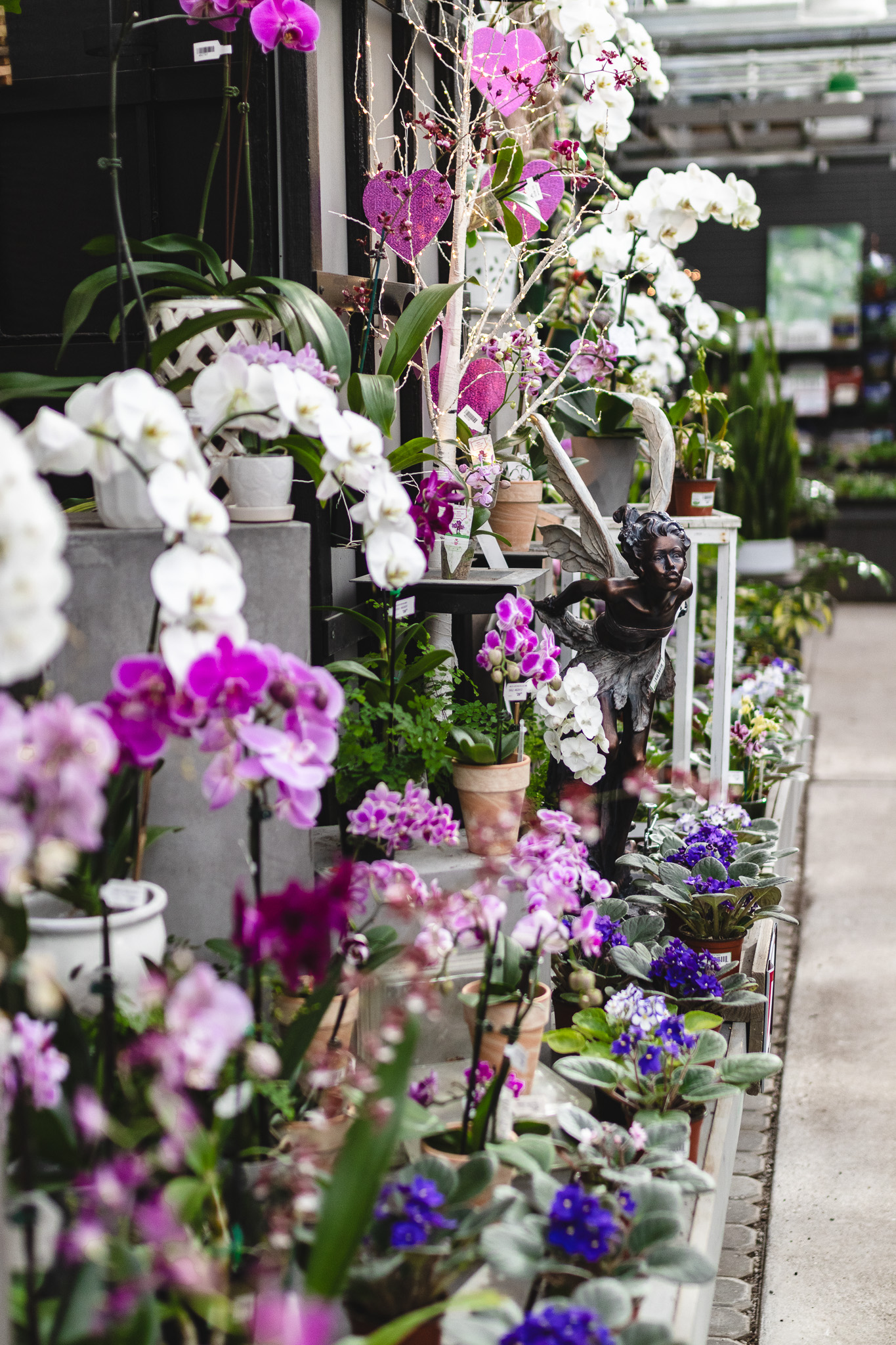Welcome to the fascinating world of orchids! These exotic and elegant flowers have captured the hearts of houseplant enthusiasts and collectors alike. If you've recently acquired an orchid or are considering bringing one into your home, this blog is your go-to guide for Orchids 101 – an introduction to their care. From understanding their unique characteristics to providing the ideal environment, let's embark on a journey to ensure your orchids thrive and bloom beautifully.


Getting to Know Orchids:
Orchids are a diverse family of flowering plants with over 25,000 species and 100,000 hybrids. Known for their intricate and vibrant blooms, orchids can be found in various shapes, sizes, and colors. Before delving into care tips, take some time to appreciate the diversity within the orchid family. Here are some more details about the orchids we currently have in stock:
Phalaenopsis - The Phalaenopsis orchid, commonly known as the "Moth Orchid," has a rich history rooted in Southeast Asia. Discovered by European botanists in the 18th century, its name is derived from the Greek word "Phalaina," meaning moth, due to the resemblance of its flowers to fluttering moths. Initially, these orchids were mainly found in the wild, but with increasing interest, they became popular among collectors and enthusiasts. Today, Phalaenopsis orchids are one of the most widely cultivated and hybridized orchid varieties, showcasing a spectrum of colors and patterns.
Oncidium - The Oncidium orchid, often called the "Dancing Lady Orchid," has a diverse history spanning the Americas. Native to regions from Florida to Argentina, the Oncidium genus comprises hundreds of species. With vibrant and intricate flowers resembling dancing figures, Oncidium orchids gained popularity in the 19th century. Their captivating appearance and adaptability have made them favorites among orchid enthusiasts worldwide.
Dendrobium - Dendrobium orchids have a storied history deeply rooted in Asia, Oceania, and Australia. The name "Dendrobium" is derived from the Greek words "dendron," meaning tree, and "bios," meaning life, emphasizing their epiphytic nature. These orchids have been cultivated for centuries, especially in China and Japan, where they hold cultural significance. In the 19th century, European collectors introduced Dendrobium orchids to the Western world. Today, their popularity is attributed to their diverse forms, ranging from small, delicate blooms to large, showy inflorescences.
Paphiopedilum - The Paphiopedilum orchid, commonly known as the "Lady's Slipper Orchid," has a unique history centered around Southeast Asia and the Indian subcontinent. With its distinct slipper-shaped pouch, Paphiopedilum orchids have captured the fascination of orchid enthusiasts for centuries. Paphiopedilum orchids have since become prized for their intricate appearance. Cultivation efforts and hybridization have expanded the range of colors and patterns available, making them sought-after additions to orchid collections.
Caring for Orchids:
Taking care of orchids isn’t as hard as it seems! All you need is the right information to equip you with good habits so your orchids can thrive.
Light Requirements - One of the crucial factors in orchid care is providing the right amount of light. Most orchids prefer bright, indirect light. Avoid placing them in direct sunlight, which can scorch their delicate leaves. Understanding your orchid's specific light requirements based on its species will help you create the perfect spot for it to thrive.
Watering Techniques - Orchids are unique when it comes to watering. Overwatering can lead to root rot, while underwatering can cause dehydration. Finding the right balance is key. Allow the top inch of the orchid's growing medium to dry out before watering again. Orchids are typically potted in a well-draining mix to prevent waterlogged roots. PRO TIP: Don’t water your orchids with ice cubes! Although easy to do, it does not provide the orchid with enough water at the right temperature.
Humidity Matters - Many orchids come from tropical regions with high humidity. Mimicking these conditions in your home is crucial for their well-being. Consider placing a tray with water near your orchids or using a humidifier to maintain the optimal humidity levels. This is especially important during the winter months when indoor air tends to be drier.
Choosing the Right Pot - Orchids have unique root systems, and choosing the right pot is essential. Opt for pots with ample drainage holes to prevent water accumulation. Some orchids prefer to be snug in their pots, while others benefit from a bit more space.
Feeding Wisely - Orchids have specific nutritional needs, and regular feeding is crucial for their overall health and blooming potential. Use a balanced orchid food and follow the recommended dilution and application instructions. Remember that orchids have a resting period, typically after blooming, during which feeding can be reduced.
Repotting Orchids - Knowing when and how to repot your orchid is an essential aspect of care. Repotting is usually done when the growing medium breaks down or when the orchid outgrows its current pot. Be gentle during the repotting process to avoid damaging the delicate roots.
Congratulations! You've just completed Orchids 101, your introductory guide to orchid care. With a bit of knowledge, attention, and care, you can cultivate a stunning collection of these mesmerizing flowers. Remember to enjoy the journey, learn from your orchids, and revel in the beauty they bring to your home. To keep inspired and grow with us, follow us on Facebook, Instagram, Pinterest, and TikTok to dig into the joys of gardening!
